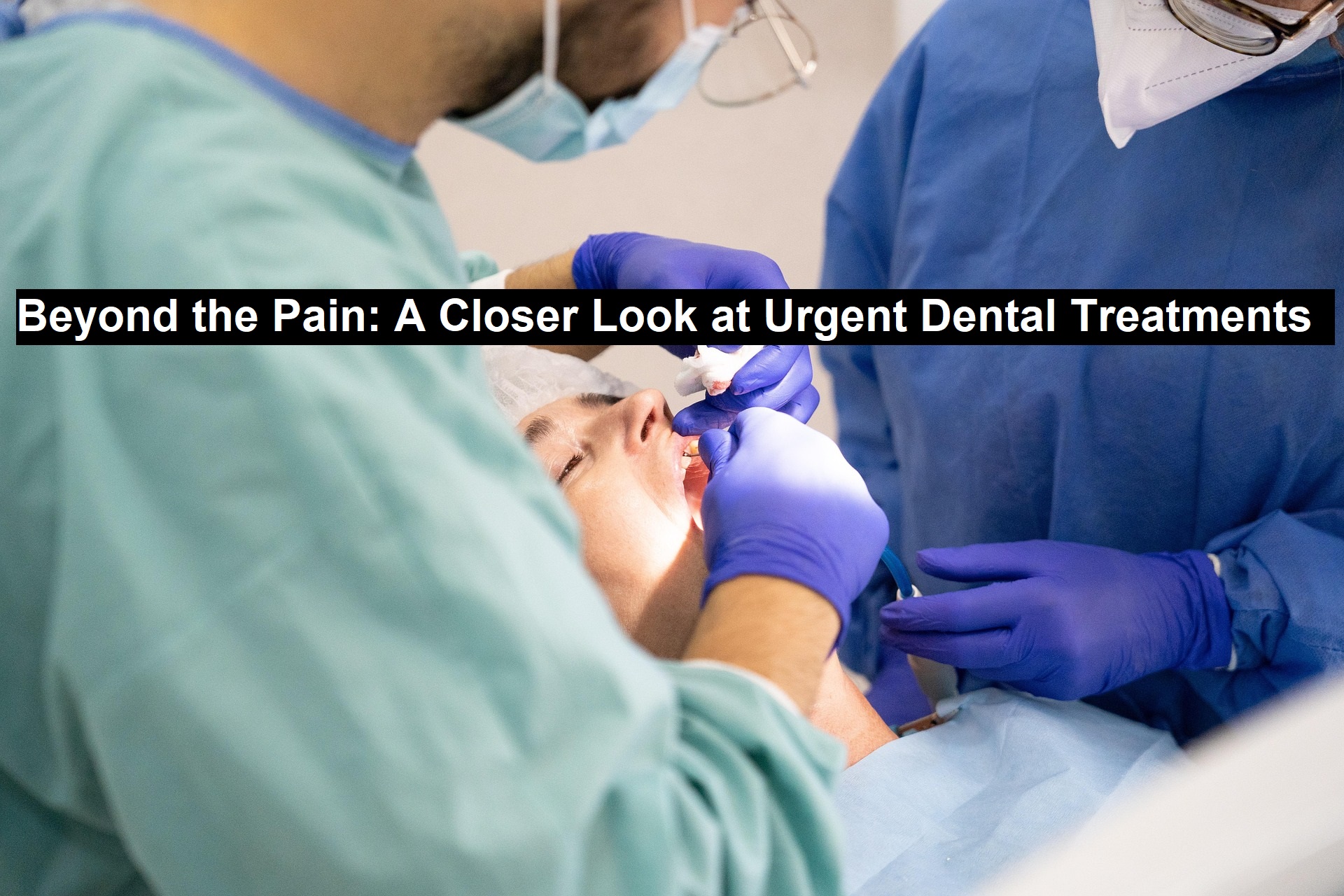Dental emergencies don’t wait for a convenient moment to strike. One minute, you’re enjoying a meal or sipping a drink, and the next, you’re dealing with a cracked tooth, sudden swelling, or a toothache that feels unbearable. When dental distress demands immediate attention, Urgent Dental care steps in to save the day—and possibly your smile.
This blog dives deep into the world of urgent dental treatments: what they are, when to seek them, and how modern dentistry goes beyond pain management to restore function, prevent complications, and protect long-term oral health.
What is Urgent Dental Care?
Urgent Dental care refers to immediate treatment provided for dental issues that can’t wait for a scheduled appointment. These emergencies often involve significant pain, trauma, bleeding, or the risk of permanent damage if not treated promptly. Unlike routine dental care, urgent treatments prioritize quick intervention and often require specialized tools, diagnostic imaging, and fast decision-making.
Anyone can experience urgent dental problems at any time. While preventive care helps reduce risk, accidents, infections, and unexpected complications still occur—making urgent dental services an essential part of modern dentistry.
Read: Understanding Your Baby’s Brain Development
Common Urgent Dental Situations
Recognizing when a dental problem becomes urgent is key to getting timely help. Here are some of the most common reasons patients seek Urgent Dental care:
1. Severe Toothache
A relentless toothache isn’t just painful—it can signal underlying problems like tooth decay, infection, or abscess. If over-the-counter painkillers no longer help and the pain interferes with sleep or daily activity, it’s time to visit an urgent dental clinic. Persistent pain could mean that the pulp (the innermost part of the tooth) is inflamed or infected, requiring immediate treatment such as a root canal or extraction.
2. Knocked-Out Tooth (Avulsed Tooth)
Urgent care is necessary for a tooth that has been totally extracted as a result of trauma (such as a fall or sports accident). Quick action—ideally within 30 minutes—can sometimes save the tooth and allow it to be re-implanted successfully. Dentists will assess the damage, clean the area, and possibly stabilize the tooth using a splint.
3. Cracked or Broken Teeth
Whether due to biting on something hard or an accident, a broken tooth can range from a minor chip to a major fracture involving the nerve. Urgent care is necessary to relieve discomfort, prevent infection, and restore the tooth’s structure. Treatments may include bonding, crowns, or even emergency root canal therapy.
4. Dental Abscess
A dental abscess is a pus-filled infection often caused by untreated cavities, gum disease, or trauma. Symptoms include swelling, throbbing pain, fever, and a bad taste in the mouth. Because the infection might spread to other tissues or even the circulation if treatment is not received, abscesses are regarded as dental emergencies.Urgent drainage and antibiotics are typically required.
5. Lost Fillings or Crowns
Even while losing a dental repair doesn’t always hurt, it might expose your tooth to infection or more harm. If the exposed area is sensitive or the missing piece affects your bite, urgent dental repair is recommended.
6. Gum or Jaw Injuries
Lacerations to the gums, cheeks, or lips, or a dislocated jaw from trauma, can result in profuse bleeding, swelling, and serious complications. Emergency dental professionals are trained to manage these injuries efficiently and may work in tandem with oral surgeons for severe cases.
What to Expect During an Urgent Dental Visit
The goal of an Urgent Dental visit is not only to alleviate immediate pain but also to stabilize the condition and prevent further damage. Here’s what a typical emergency dental appointment looks like:
– Rapid Assessment
Your dentist will begin by asking about your symptoms and medical history. Digital X-rays or other diagnostic tools may be used to assess hidden issues, such as infections below the gumline or internal fractures.
– Pain Relief and Stabilization
Immediate steps are taken to control pain and stop bleeding. Local anesthetics, sedatives, or pain relievers may be administered. Temporary measures like dental dressings, splints, or medicated fillings are used to stabilize the area.
– Treatment Plan
Once the issue is under control, your dentist will discuss a longer-term treatment plan. This may involve scheduling follow-up procedures such as permanent restorations, root canals, or surgeries once the immediate threat has passed.
The Importance of Timely Action
Delaying treatment for dental emergencies can result in irreversible damage. What starts as a minor infection can quickly spread, requiring more invasive—and expensive—treatments. Worse yet, untreated dental infections can lead to systemic complications like sepsis, which can be life-threatening.
Seeking Urgent Dental care as soon as possible not only minimizes pain but also helps preserve your teeth, gums, and overall health. It’s better to err on the side of caution—if you’re unsure whether something qualifies as an emergency, contact your dental provider to ask.
Tips for Handling Dental Emergencies at Home (Before You Reach the Dentist)
While professional care is essential, the actions you take immediately after a dental emergency can significantly influence the outcome. Here are some steps to follow:
- Toothache: Rinse with warm salt water, apply a cold compress, and take over-the-counter pain relievers (avoid aspirin directly on gums).
- When a tooth is knocked out, handle it by the crown rather than the root, rinse it gently with water, and attempt to put it back in the socket. Alternatively, preserve it in milk or saliva until you get to the dentist.
- Broken Tooth: Use warm water to rinse the mouth, apply a cool compress to minimize swelling, and preserve any broken pieces.
- Abscess: Apply a cold compress and rinse with salt water. Do not try to pop the abscess yourself or use heat.
- Lost Crown or Filling: If possible, reattach the crown with dental cement or toothpaste as a temporary measure.
Final Thoughts
Dental pain doesn’t just affect your mouth—it disrupts your day, your sleep, your confidence, and sometimes your ability to eat or speak. Urgent Dental treatments offer more than just temporary relief; they provide timely, compassionate care that prioritizes your immediate and long-term oral health.
By recognizing when a dental situation requires urgent care and acting swiftly, you protect not only your teeth but your overall well-being. Whether it’s an unexpected injury, an infection gone rogue, or a restoration that’s gone missing, Urgent Dental services are just a call away. Don’t wait for the pain to take over—go beyond the discomfort and take action with dental care when it matters most.
Author’s Bio:
Richard Clark is a qualified content writer with experience in writing on a variety of subjects. He has written a lot of content on dental implants, urgent dental and dentist St Louis services as well.



